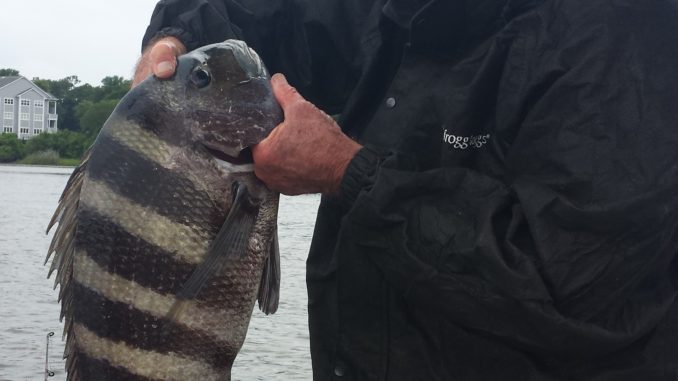
December fishing is great in and along the rocks before fish head into ocean
The Carolinas are in the middle of the eastern seaboard, where unpredictable weather drives the outdoor scene. Even though the first day of winter arrives Dec. 20, 75-degree days are still common.
As the cold season looms, sheepshead get antsy and pack up at the jetties on either side of Little River at the North Carolina-South Carolina state line before they head into the ocean. For anglers with access to fiddler crabs, fishing around the jetties this month fishing can be epic.
Sheepshead are generally tolerant of cold water, but they will head into the ocean to nearshore reefs just after Christmas every year. Between January and May, they congregate there to spawn, and while they are chilling, making more sheepshead, they will devour every crustacean around.
In anticipation of the winter famine, their last stand at the jetties brings heavy feeding behavior and a prime opportunity for anglers able to withstand long-sleeved weather.
Kyle Graves of Camden, S.C., is a cold-tolerant angler who would rather chase a striped convict than any other finned foe on the planet. Late fall and early winter sheepshead fishing can be incredible for Graves, who takes several extended trips every year to do what he’s best doing. He doesn’t fish for sheepshead; he just catches them.
“You can catch them on 100-degree days in the summer, but when they are getting ready to make a move, they start feeding like crazy,” Graves said. “It can be unbelievable and by far the best bite we experience all year.”
Weather conditions and tides guide Graves to schedule his sheepshead trips.
“We prefer to fish on both sides of the high tide because there is more area for the sheepshead to feed on,” he said, pointing to small crabs, shrimp, barnacles and any other ocean life adhered to the jetty rocks. When the tide is higher, the hunting grounds expand; there are more places sheepshead can go, and that plays right into Graves’ hands.
Graves prefers to use his trolling motor to creep along the outside edge of the jetties because he usually catches more fish on the ocean side. Being mobile allows him to find fish without wasting time anchoring.
“I like the trolling motor because you can cover more area, and you can fish areas over and over or move to other places easily. It can be a little tougher fishing, but it can really pay off this time of year,” he said.
The ocean side of the jetties is exposed to wind and wave action that can create problems for fishing with a trolling motor.
“We want it to lay down as much as possible. The best days are when it looks like a lake out there,” said Graves, who prefers calm conditions since he is using light line and lightly-weighted terminal tackle. While some anglers use a Carolina rig, Graves uses a 1/8-ounce jigheads with light-wire hooks.
“We will sometimes get some barnacles to chum them, and it seems to excite them some, but we catch them on fiddler crabs all the time, and they are easy to get and use,” he said.





Be the first to comment